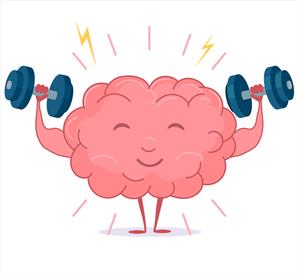
29 Sep 2019 Here is a simple technique to help you stay focused

This is the third and final article in our series relating to continuous partial attention (CPA). In our first article we explained what CPA is, its impact and some strategies to beat it. In our second article we expanded a little on some more strategies to stay focused and beat CPA. In this final installment, I’d like to turn our attention to strategies that will help you stay focused for longer.
It might seem counter-intuitive in the age of distraction, but you can train your brain to focus effectively for longer periods of time – to reach a state of ‘flow or get into the zone, to reach that point where time just seems to stand still and you are totally focused. It just takes time to get there.
In today’s continuously connected digital world, there is a genuine concern that we our losing our ability to stay focused in this way. The internet, the smartphone among other things, have combined to reduce our attention span.
In a fascinating American study, market researcher dscout discovered that, on average, a person touches their smartphone about … wait for it … 2600 times per day. That’s astounding when you think about it! And that was in 2016. It could be more today.
It may be that the younger generation are more adept at switching between tasks and processing things more quickly, but at a significant cost: lack of focus. Those of us who are older and perhaps less tech savvy may have a mental advantage here in having superior ability to focus for longer, which aids in learning, etc … if we haven’t lost that ability through our own use of technology.
This is something I certainly recognise. I find now that it has become harder to stay focused than it used to be. I have to make a conscious effort to switch off and work on a self-imposed deadline. (See the Pomodoro technique
Exercise your brain…it’s a muscle you can train

Over the last few years, I’ve been trying to improve my physical fitness by doing some running up hills as part of my morning exercise. I have a few favourite hills near to home that I use. I tend to walk the hill once to warm up, and then run up/walk back down several times. When I started doing this, I could barely get to the top without stopping. These days, I can run to the top of all the hills I use fairly easily. The more I’ve done it, the easier it has become. However I also need to keep it up. If I miss a few days, on returning I find it harder to complete the sets I would normally do.
One of the best ways to train (or re-train) your brain to focus and stay focused is also through exercise. Not physical exercise (though that will help too) but mental exercise. It’s about switching off and focusing on a single task for a set amount of time, then gradually increasing that amount of time. Like getting physically fit, this isn’t easy to do if you’re starting from a low base. It takes practice and discipline. But as with any exercise, the more you do it, the easier it gets.
Customised Pomodoro using your Calendar
Lately, I’ve been using my version of the Pomodoro Technique. I’ll call it my Priordoro strategy!
- Decide – Decide upon a single task I need to complete.
- Block out – Block out my Outlook Calendar for the time required. (Let’s assume 60 minutes)
- Mentally prepare – When you get a reminder to start (usually 15 minutes before), snooze till the start time!
- Emails offline – I then work offline from emails in Outlook. (Send/Receive > Work Offline)
- Start Task – I start the Task and snooze the reminder for 60 minutes.
- Dismiss or Snooze – When the reminder sounds, if I have not quite finished, I hit the snooze for another 5, 10 or 15 minutes until it’s done.
- Emails Online – I then change Outlook settings to “Work Online” to receive emails
- Break – On completing the task I have a 15 to 30 minute break to check emails, etc.
- Repeat – I go back to Step 1 or 2)
Stay Focused
I’m finding that this approach is helping me to stay focussed for longer and get some quality ‘deep work’ done. I started with 30 minutes, because an hour seemed a bit too long. But now, I feel OK about starting with an hour. In effect, I’ve been training my brain to focus for longer. Don’t forget to switch off all your notifications too!
A good way to get started on practising this approach is to commence each day with a specific task or even several in mind. You may have your own way of doing this of course. Though personally, I like to block out the time in my Outlook Calendar for the important tasks I need to complete that day.
Whatever system you use, the trick is to really try and focus on one task for a predetermined amount of time and not allow yourself to get distracted.
We all need to find ways to increase our focus time and there is not a single one-size-fits-all approach that will work for everyone. The challenge is to find a way to stay focused that works and then practice that approach until it is really working for you.
Geoff Prior – Lingford Consulting, September 2019
Workload & Email Management Training/Coaching. MBTI Consultant
Interested in more ways to improve your productivity. Check out our range of productivity training programs here.


No Comments